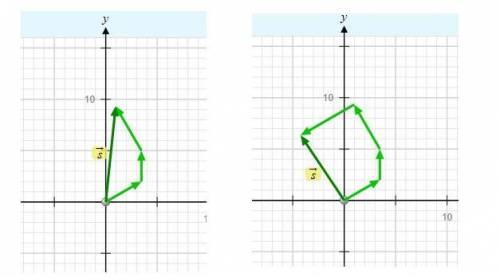
Add the following vectors using head-to-tail method and verify your results using the component method.
1. Vector A has a magnitude of 4.0 cms at an angle of 30 degrees with the positive X-axis; vector B has a magnitude of 3.0 cms at 90 degrees with + X-axis; vector C has a magnitude of 5.0 cms at 120 degrees with + X-axis.
2. In addition to vectors A, B, and C in problem # 1, there is a vector D with a magnitude of 6.0 cms at an angle of 210 degrees with +X-axis.
Note: Use a graph paper to show your work for problem number 1 and 2 using the head-to-tail method.
Do the component method analysis of both of these problems using the component method of adding vectors. Show your work step by step by taking the x and y components of all the vectors; adding all the x and y components together and then finding the resultant vector magnitude and direction knowing x and y are perpendicular to each other.
Compare the results of the graphical analysis as well as the component method and find the percent error using the component method as standard result

Answers: 3


Another question on Physics


Physics, 22.06.2019 01:20
An engineer designs a roller coaster so that a car travels horizontally for 152 ft, then climbs 137 ft at an angle of 34.0° above the horizontal. it then moves 137 ft at an angle of 48.0° below the horizontal. if we take the initial horizontal motion of the car to be along the +x-axis, what is the car's displacement? (give the magnitude of your answer, in ft, to at least four significant figures and give the direction of your answer in degrees counterclockwise from the +x-axis.)
Answers: 1

Physics, 22.06.2019 09:30
This is important. 1. which of the following is an si base unit for measuring length? (2 points) inch gram meter mole 2. which of the following units for distance is an si unit? (2 points) centimeter foot inch yard 3. which of the following tools should a scientist use to measure an object in meters? (2 points) electronic balance pan balance tape measure thermometer
Answers: 2

Physics, 22.06.2019 09:30
On a day when the barometer reads 75.23 cm, a reaction vessel holds 250 ml of ideal gas at 20 celsius. an oil manometer ( ρ= 810 kg/m^3) reads the pressure in the vessel to be 41 cm of oil and below atmospheric pressure. what volume will the gas occupy under s.t.p.?
Answers: 2
You know the right answer?
Add the following vectors using head-to-tail method and verify your results using the component meth...
Questions





Biology, 10.04.2020 16:51













Mathematics, 10.04.2020 16:51

Chemistry, 10.04.2020 16:51







